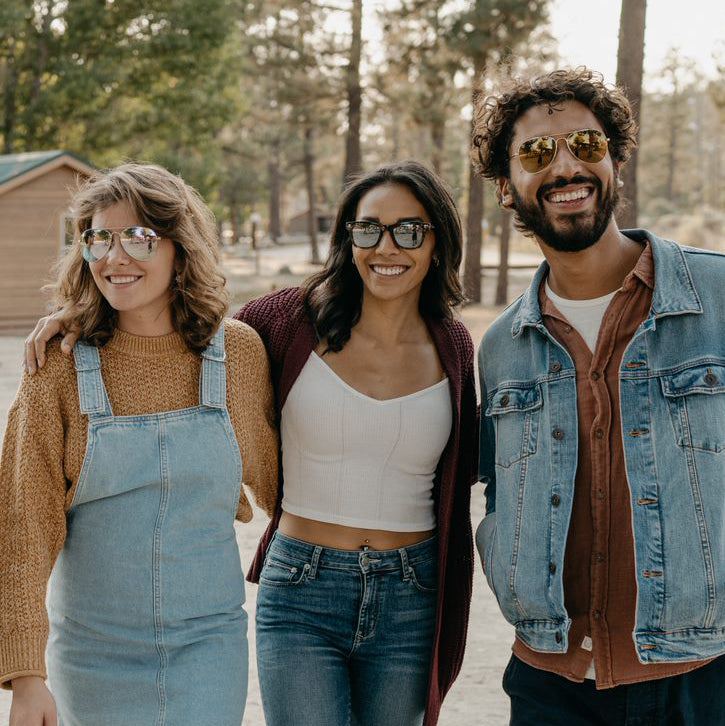Virtual reality fashion is not a thing of the future. It’s here. And more and more brands are incorporating AR fashion apps all the time. Let’s take a look at this high-tech trend.
Fashion Exclusively for the Digital Realm
It may sound crazy to some, but there’s popular fashion that only exists in the virtual world. The idea was recently furthered by group effort from artist Johanna Jaskowska, blockchain player Dapper Labs, and the Dutch start-up The Fabricant; they created a digital dress named Iridescence. It sold on the blockchain in 2019 for $9,500, valued and tradable just like cryptocurrency, sold as a personalized filter just like any other used on Instagram or Snapchat.
Giving yourself a digital makeover with virtual fashion is a growing trend with people who want to seriously up their online personas beyond simple filters and background changes. We've seen it in virtual worlds including Animal Crossing, which has held virtual fashion shows, and Fortnite, where outfits for avatars are getting more elaborate each day.
Virtual Try-Ons are the New Normal
You've probably seen commercials on TV touting virtual try-ons for glasses. That practice is growing and will someday, and someday soon, include just about every type of clothing and fashion accessory out there. Both online and with virtual experiences in the real world. Timberland has an in-store virtual try-on experience; just stand in front of the 80-inch screen to see how you'll look in Timberland outfits. And that started way back in 2014!
More recently we've seen much-improved tech with virtual try-ons, with an ever-increasing number of apps fitting users with clothing; the mybraFit app uses AI and augmented reality to determine bra fits. MTailor.com boasts that they can fit folks for suits in just 15 seconds with their body-measuring app. Adidas made headlines back in 2019 with its AR try-on feature that tracks your foot movements in real-time as you wear your virtual sneakers.
Snapchat recently added a range of AR try-ons to its shopping portfolio, partnering with Prada and the luxury-fashion giant Farfetch to allow users to virtually try on clothing using their smartphones. The Snapchat features use a "3D Body Mesh" to simulate how clothing fits in real life, along with body tracking technology to replicate how the clothing moves with you.
AR Enabled T-Shirts are Everywhere
There's a pretty good chance you've passed someone on the street who is wearing something on their t-shirt that you can't see. At least not without your smartphone and the right app. Just point, tap, and that t-shirt will come alive on your phone's display in a whole new way.
The technology has been with us for a few years, though recently Vogue Singapore took augmented reality t-shirts to a new level with an Instagram-integrated augmented-reality tee that adds some creative AR elements. In this case, a crane offers a 3D experience through the Vogue Tee filter. Vogue says it's got more AR filters in the works.
Brands are getting ever-more creative with their virtual reality wear. Finch has some particularly creative AR t-shirts, notably offerings that come alive with multi-colored flames, whipping and dancing around the wearer as they move in real-time.
People Are Shopping at Virtual Stores
The virtual clothing trend isn't limited to online shopping for individual items or the odd in-store monitor display. We're seeing a move to complete virtual shopping experiences with digital spaces like the virtual boutique from Machine-A. The London-based luxury concept store debuted at this year's London Fashion Week in conjunction with the Institute of Digital Fashion. All you need to do for a virtual shopping trip is scan a QR code that'll take you into what they're billing as a “larger-scale AR experience," able to cruise through a virtual showroom with lots of ensembles just as you would in a real store.
And we’re not only talking about high fashion that employs AR technology. Kohl’s has set up a Kohl’s Augmented Reality Virtual Closet through Snapchat. Users can browse the digital store and purchase clothing without ever leaving the app.
5G Has an Increasing Impact on AR Clothing
As the AR software improves, the hardware is going to have to keep up. While the 5G rollout in the United States has been slow, it will eventually get to the majority of consumers. Forecasters predict that about two-thirds of the country will have 5G by the end of 2023 at the latest. That means faster downloads and better real-time digital effects with no or minimal lags, conditions that are ripe for high-quality AR experiences on the average smartphone.
So, embrace AR fashion. Virtual reality clothing try-ons will one day be as commonplace as department-store dressing rooms—without having to worry that you didn’t fully close the curtain.
Written by William McCleary for Knockaround.




10 Wonderfully Weird Pet Accessories
Random Celebrity Products That Are Really Real